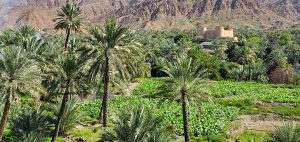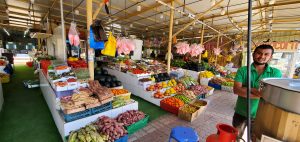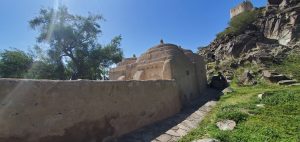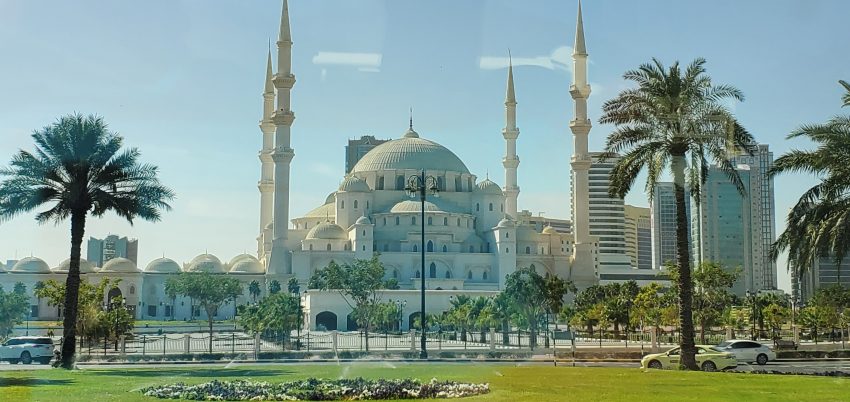Fujairah is the fourth largest of the emirates. It does not have the wealth or tourism appeal that Abu Dhabi or Dubai have, but it allowed us to see the “other” side of the United Arab Emirates. Our drive took us through lush green landscapes along the scenic coastline, up mountainous terrains and through villages that ranged from clean and modern to dirty and run down.
The predominate economic force in Fujairah is the oil refineries. Oil is transported from Abu Dhabi, processed and then shipped out on massive tankers. The processing of oil still has an important influence on this region.
then shipped out on massive tankers. The processing of oil still has an important influence on this region.
Our ship excursion took us first to a small museum whose focus was predominately on life in the region before oil was discovered. Most of the population consisted of small Bedouin tribes that lived a nomadic existence in the desert. There were artifacts discovered in numerous archaeological sites nearby including funeral tombs. These settlements were used over and over again throughout time so there were layers of civilizations to explore.
 From there we travelled to the Fujairah Fort which occupies a defensive position in the area. Other smaller forts doted the area surrounding this which we saw as we explored the desert region that has been reclaimed for agricultural purposes. From there we drove by the oldest cemetery in the region, whose excavation provided many of the artifacts seen the in the museum. Throughout all of this region were elevated train tracks used to transport the oil.
From there we travelled to the Fujairah Fort which occupies a defensive position in the area. Other smaller forts doted the area surrounding this which we saw as we explored the desert region that has been reclaimed for agricultural purposes. From there we drove by the oldest cemetery in the region, whose excavation provided many of the artifacts seen the in the museum. Throughout all of this region were elevated train tracks used to transport the oil.
One of the largest open air markets is located in eastern part of Fujairah, the Friday Market, so named many years ago but open every day of the week now. The stalls offered everything from fruits and vegetables to cooking pots and carpets.
ago but open every day of the week now. The stalls offered everything from fruits and vegetables to cooking pots and carpets.
A short drive from there was the oldest mosque in the area, built in 1446. This small structure is still in operation today and is a pilgrimage destination for many of the faithful in the area. Another fort was located a short walk up a hill nearby and we were thrilled to see a pen of domesticated camels over the ridge. Most of the herds of camels we had seen so far were roaming the desert near the main highways and harder to photograph. We also saw sheep and goat herds in many of the villages we passed.

Our drive back to ship passed by a stunning man made waterfall, a number of beautiful homes, and the largest oil refinery in Fujairah.
Given that we knew little of this area and did not carry high hopes of a memorable port stop we really enjoyed Fujairah. Our excursion essentially did a loop around the eastern part of the region as our proud local guide explained life in the area, its cultural and historical influences and its future as part of the United Arab Emirates.
